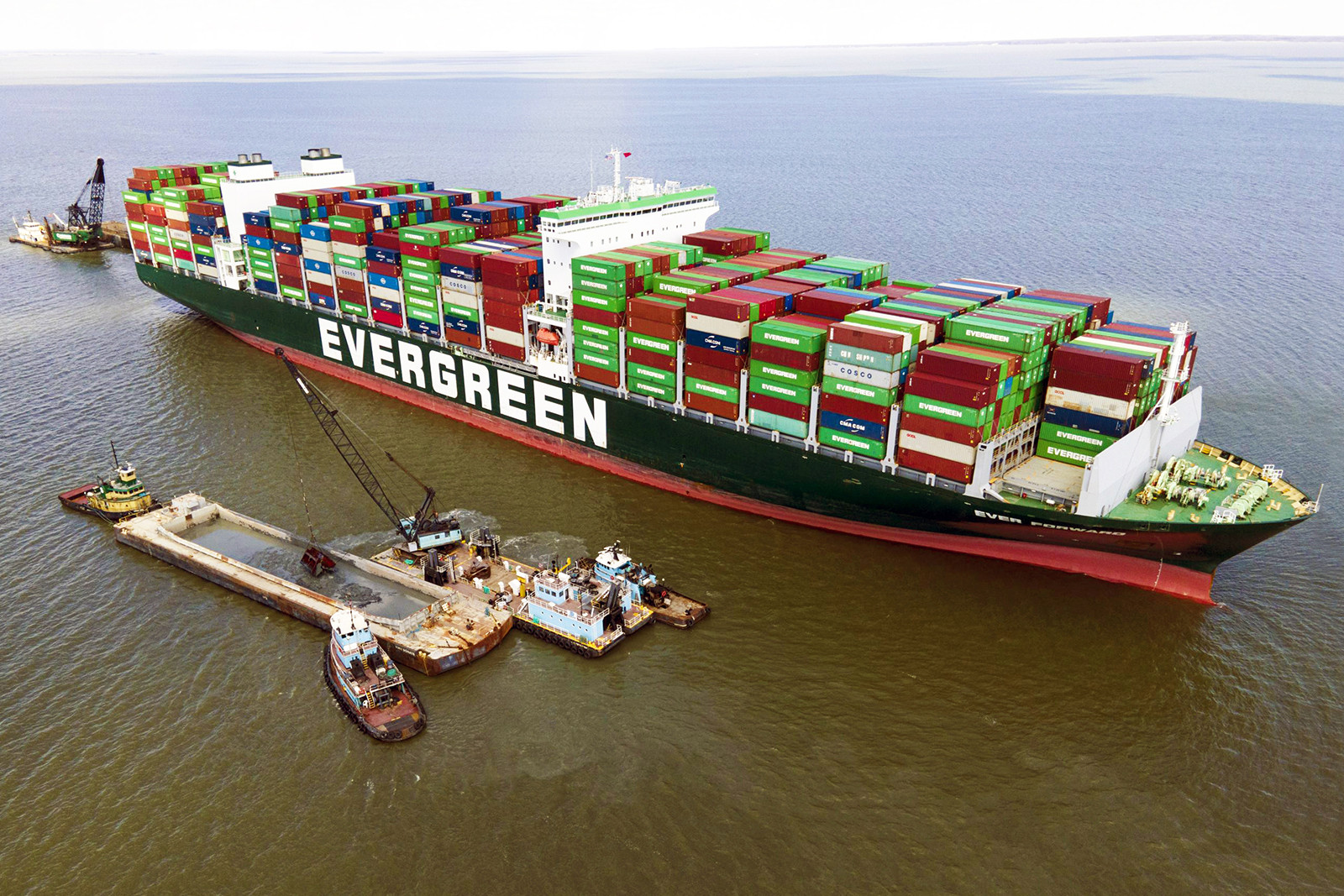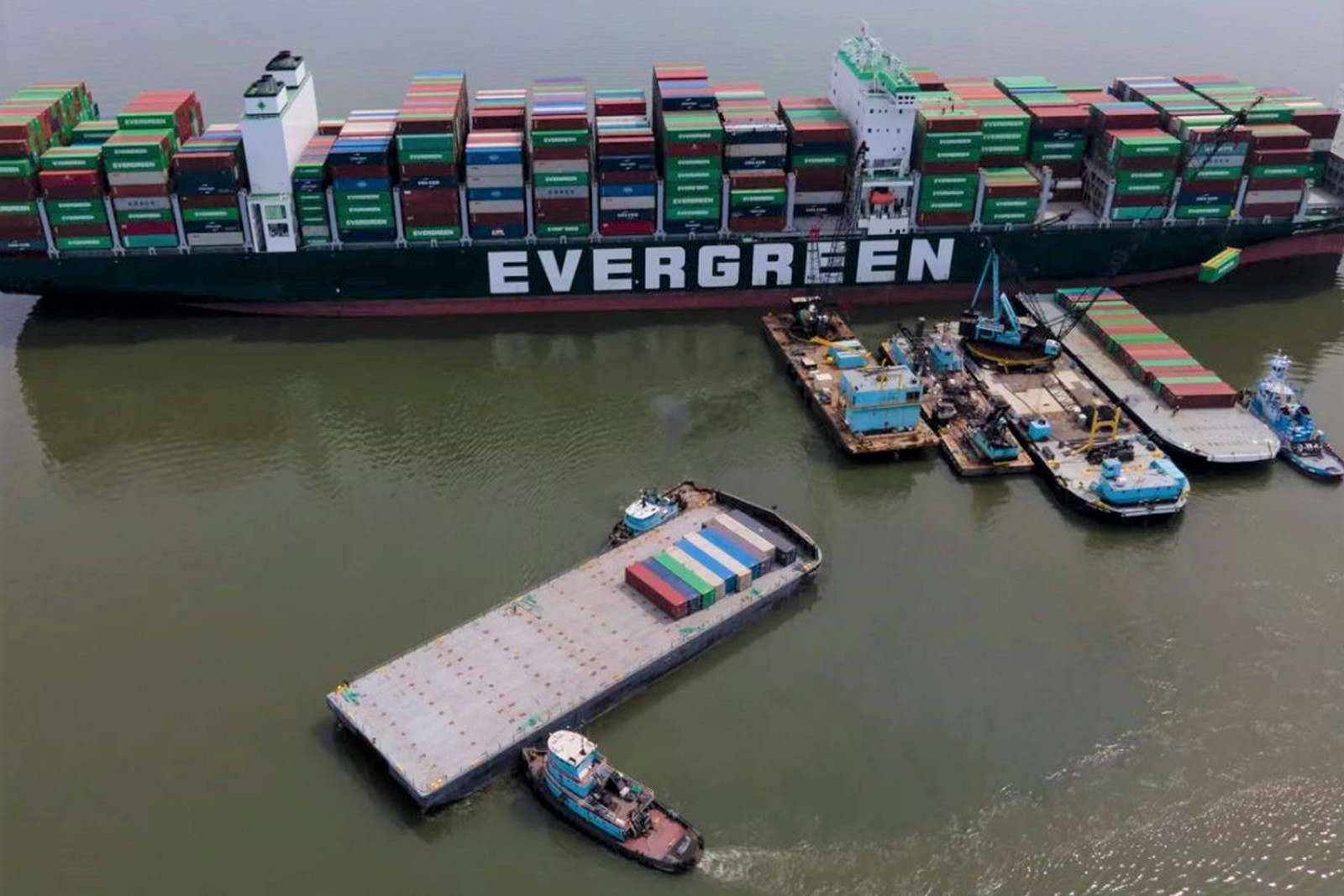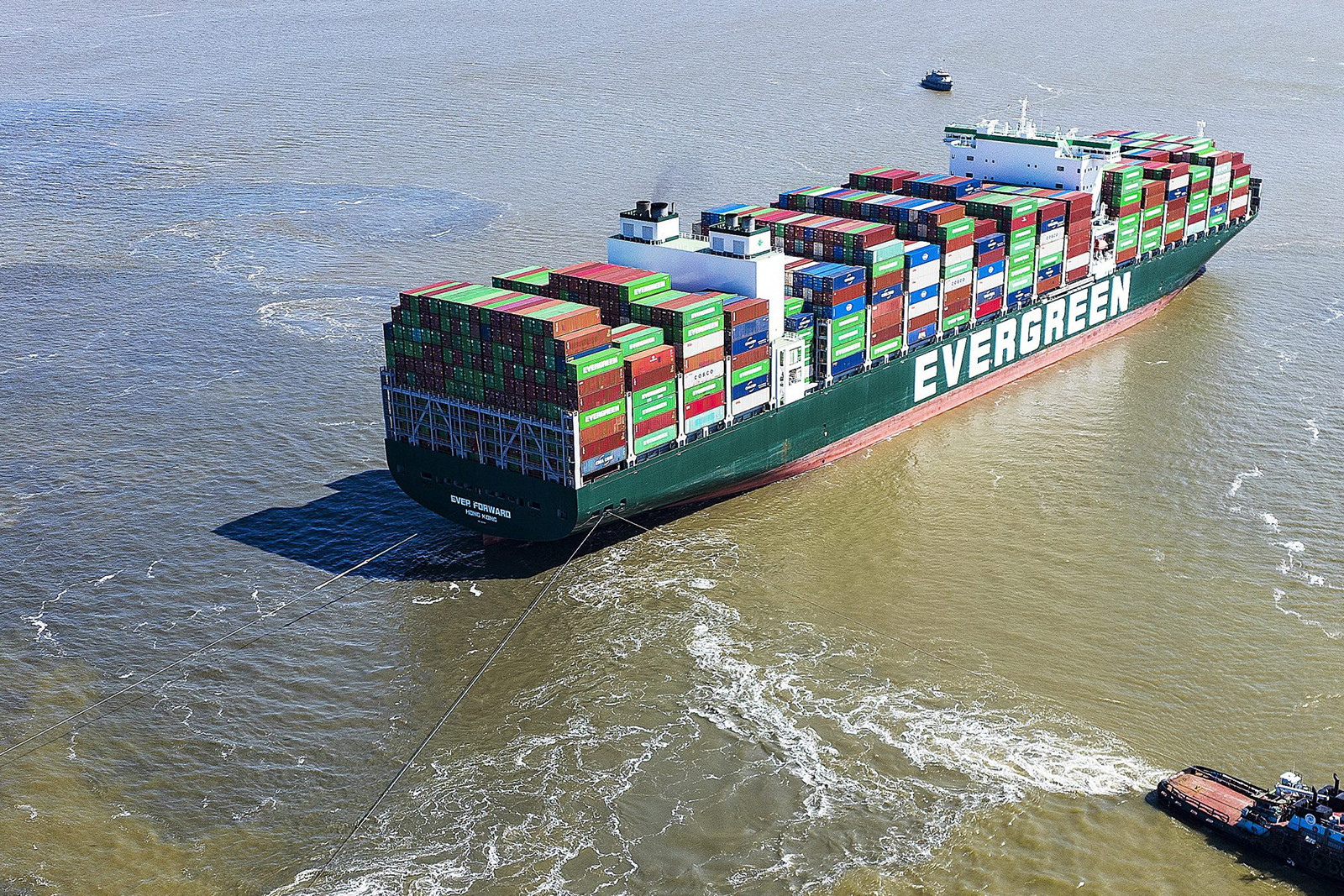Since SMIT Salvage joined Boskalis, the specialist knowledge and expertise of the company has been used very regularly during salvage operations. The refloating of the enormous container vessel Ever Forward – a slightly smaller version of the Ever Given, which was refloated last year in the Suez Canal – in the access channel near the American city of Baltimore once again demonstrated the value of working together.
People’s first thought of refloating a grounded container vessel is deploying heavy tugs. A less obvious thought is to dredge around the ship. Yet that is what salvage master Chris Bos realized quickly after arriving at the scene. And so his colleague Peter Niemantsverdriet from Boskalis’ Dredging Division also boarded a plane to Baltimore. Although salvors are experts in many fields, when it comes to dredging Boskalis has many more specialists. Because the Ever Forward had missed the bend in Baltimore’s access channel to the Atlantic Ocean and dug itself in the bed of soft, clinging clay, dredging was inevitable. However the local authorities demanded that dredging should not go too deep, because of concerns about the turbidity that would cause in the water and the impact that would have on the environment.
Memo to the US Navy
Bos: “We first did the best we could and dredged what we were allowed to do. But things turned out as we expected: it wasn’t enough. We drafted a memo and sent it to the US Navy, who had to grant permission to dredge deeper. That request was approved and so we could move ahead.” In the end, just under 110,000 cubic meters of clay was dredged to free the Ever Forward. After three attempts to refloat the vessel free, the salvage team got it back facing the right way. “The last attempt was successful due to a combination of the earlier dredging work and the fact that 500 of the 5,850 containers had been taken off the vessel, reducing the draft.”



Just eight hours
The refloating itself was not an easy operation. Because the channel is relatively narrow and the Ever Forward is one of the largest category of container vessels, the channel had to be closed to other shipping traffic for a time. The salvors were given permission to connect the tugs to the Ever Forward from midnight to 8:00 am. “You have to be able to explain clearly why you do certain things. Which is why it’s great to have so many specialists at Boskalis to work with and draw up a plan,” says Niemantsverdriet. Bos adds: “We need that plan to make it clear to the client or the other parties involved that a vessel won’t be sailing again ten minutes after the start of a refloating operation. But also to explain why you have to dredge deeper than is actually allowed. If people ask why, you need to have an answer.”
It’s great to have so many specialists at Boskalis to work with
Specific knowledge
Bos thinks there will be more collaboration to come in the future. And not just with colleagues from the Dredging division, who also helped with the salvage of the Ever Given in the Suez Canal. “Since we joined Boskalis, we have been trying to use the knowledge and expertise at the company as much as possible and actively look for ways to work with other divisions and business units. It would be a shame not to make the most of the specific knowledge. We already collaborate a lot with colleagues from Hydronamic and with Research & Development, for example in the development of a dynamic sawing system that we needed for the salvage of the Baltic Ace.”
Reef Expert
In the future, even more alliances could be organized around the activities of the Salvage division. Take, for example, the presence of coral in places where vessels get into trouble. Bos: “We already work with a reef expert on occasion, but I can easily imagine that Boskalis will be employing somebody like that within a few years. And of course we will be happy to use his or her knowledge.”
